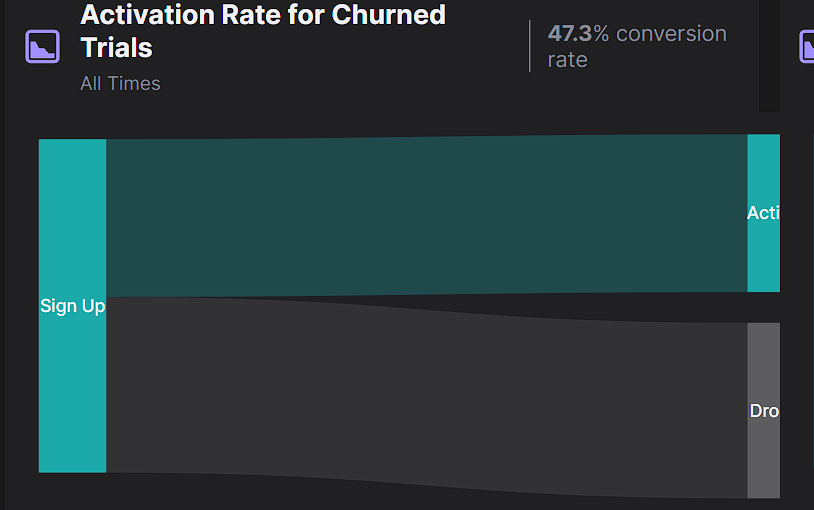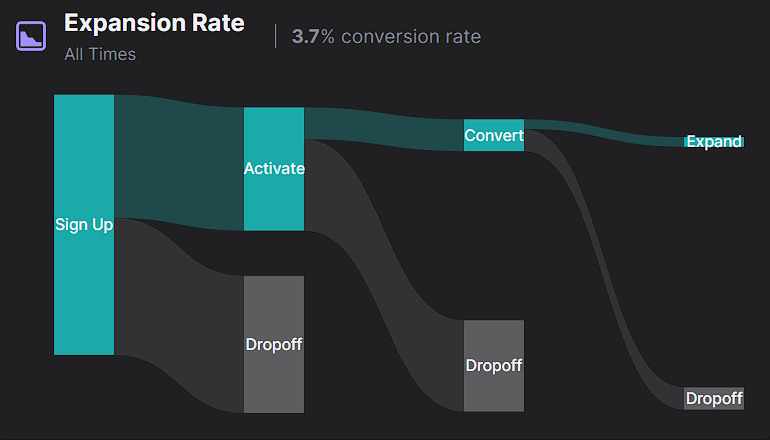What do you sell? Is it the product, an experience, or both? Is a product just a solution, or does it provide a unique experience? As Steve Jobs rightly said, “You need to start with the customer experience and work backward to the technology.”
Businesses focus on improving the tech behind their product. However, it’s not just about creating an excellent tech product or software but generating a unique experience. Customer insights help in understanding gaps in products that impact user experience.
Further, it helps agile teams integrate feedback into new iterations to improve the user experience. So, here are the top tips for gathering customer insights and leveraging them to improve product experience.
What do we mean by customer insights?
Customers interact with businesses in a specific pattern. Therefore, identifying critical touchpoints and customer pain points is crucial. Customer insights are the data you can collect at different touchpoints where users interact with your product. Therefore, data collection along the customer journey is key to product development.
Product teams can use customer insights to understand user preferences and improve features.
Take the example of Spotify. If you can see “The Playlist” on Netflix, it showcases how Spotify solved a significant issue in the music industry in 2006.
Major music labels companies like Sony, Universal, and others were bleeding money to online websites like Pirate Bay. These sites provided music for free downloads, hurting the music industry. However, using these websites was also a hassle.
You had to download songs on your device, create playlists, arrange them and then play.
Spotify created an intelligent online player that did all that for the users and was still free, focusing on the freemium model.
Spotify’s product team used customer insights to improve the streaming service.
Similarly, you can use customer insights to optimize product development. When you improve the product experience, customer satisfaction will positively impact you.
Importance Of Customer Insights In Improving Product Experience
Product experience is where a user interacts with the product or service. It can solve a problem or simply be for entertainment. So, product teams need to analyze customer insights to enhance the experience.
Customer insights are essential to creating a buyer’s persona. If you follow an agile approach, each incremental iteration will require user feedback. Agile teams can leverage customer insights to build user profiles and develop features.
Further, you can categorize user profiles and formulate audience groups. Customer insights also help in understanding specific pain points for each audience group.
So, you can create marketing strategies and improve product delivery accordingly. Take an example of GumGum’s account-based marketing campaign.

The campaign was designed to target T-Mobile’s CEO, John Legere. It shows the importance of customer insight and user profiles. You can refine product discovery and feature identification based on customer insights. It’s a process of identifying a product’s need and defining problems.
Stages of product discovery
Customer insights can help teams to conduct two critical phases of product discovery.
- The identification phase is where teams find the underlying need for a product. Customer insights can help a customer service virtual assistant address important questions like why users need your product. Or what are their pain points?
- Definition phases are where you define the problem. Data collected from user interaction with existing products or solutions help determine the problem. Further, it also allows determining features that can solve such a problem.
However, product discovery is not restricted to the initial stages of development. If you are using agile, product discovery becomes a recurring aspect. The iterative process is a great way to ensure enhanced product delivery.
Find bugs and fix product experience
It is crucial to identify bugs in your product. Customer insights can help you track bugs. For example, customer insights will help you find the cart abandonment rates if you have an eCommerce business. If there is a non-responsive feature, customer insights will help you find it. This will help you refine the shopping experience along the customer journey.
Further, optimizing customer journey touchpoints is key to the user adoption funnel. Therefore, product teams must map critical touchpoints to enhance customer experience. For example, you can track which features the user activated and at what point in the customer journey. So, you can optimize the touchpoint at which feature activation churn is higher.
The feature activation churn rate can be higher for several reasons. One of the causes for the churn can be lower usability. So it’s crucial to build functional features and solve a problem for your customers.

Customer insights can provide data on feature usability. For example, customer insights can help you find the usage rate of a feature. You can also track how much customers use a specific feature again, not just the usage rate.
How To Gather Customer Insights And Improve The Product Experience?
Product development based on customer insights provides better results than the conventional approach. For example, customer interaction and usability data allow teams to understand where features do not work. In addition, data collection and analytics require systems that track specific metrics.
1. Define what you want to know
The first step to accumulating customer insight is to define metrics. What information do you need about your customers? This is the question you need to determine whether your efforts will yield results.
Features are the heart of your product. So, defining the feature adoption insights is essential. Feature adoption is how much a user accepts the functionality.
Insights for feature adoption can include usage, the churn rate for activating features, and engagement. However, you can define metrics as per business requirements.

Tracking feature adoption insights like engagement rate is crucial, especially if your product is user-centric. For example, a feature engagement rate is essential to track if you design a social media platform. Data analytics can track feature engagement rates and improve the product.
Product perception is how users perceive the experience of your service or product. Put yourself in the user’s shoes and understand what the product offers in terms of value. Further, user experience is not just about design but also requires functionality. So, the Product development team needs to focus on the functionality that offers customers value. If you need support improving your product’s user experience, consider working with a UX agency to align your product roadmap with customer value.
2. Use different methods to collect insights
Data collection needs resources, specific systems, and tools. However, there is no preset template for collecting data, and it varies from organization to organization. Though you can use some of the following ways to collect customer insights
- Finding customer insights can be challenging if you don’t have the right resources. Online reviews are an authentic source of customer insights. It can include reviews on Google, Facebook, or other such platforms. In addition, you can leverage software review sites like G2, Capterra, TrustRadius, etc. To gather customer insights from these pages ASAP, you can use web scrapers to do it for you in a minute.
- Online reviews can help you learn little things like how customers feel about the product, drawbacks or complaints, etc.
- Dig through your customer support ticket responses and use the analytics in knowledge management software to understand the most frequently searched queries on your documentation site.
- Heatmaps can help you find specific touchpoints in the user’s journey that have bottlenecks. For example, a heatmap identifies sections that do not engage users on a website. Similarly, session recordings can help you measure how much time a user spends on your product.
- Usage rate provides insights into the usability aspect. It allows measurement of the rate at which a user consumes your product. For example, if you have a streaming platform, usage rate will help determine the average hours of content consumption.

You can measure the expansion rate for a feature that enables measurement of how users’ interactions expand from signup to the final purchase or other action.
- When you design the product, some versions include variations, and the A/B testing helps test these versions. Here, “A” is the original version with no or minimal variation, while “B” includes variations. A/B testing allows organizations to measure both qualitative and quantitative metrics.
- User feedback surveys help understand users’ pain points while using your product. It is the fastest way to get customer feedback. You can ask specific questions about how users feel about the product experience and generate insights based on the answers.
- Feedback surveys are easy to execute as you can simply use Google Forms. You can also use social media for feedback surveys.
- Direct user interviews provide instantaneous feedback. It allows you to have customer insights through one-to-one meetings.
- Chatbots use Artificial Intelligence(AI) algorithms and Natural language processing (NLP). It uses NLP to mimic human-to-human conversations. Further, NLP chatbots also help generate ticket responses for improved customer service.
3. Create personas and journey maps
Customer segmentation can help in categorizing responses and generating personalized engagement. However, gathering customer insights across a massive user base requires data. You need to specify the target audience to find customer insights.
So, creating customer personas and journey maps is the best approach to generating customer insights into the target audience.
Creating personas requires data on users like demographics, ethnicity, preferences, social media usage, etc. Further creating customer journey maps intersecting them with the persona provides enhanced customer insights.
![]()
For example, if you are tracking a persona from the US, you can generate a customer journey map based on their device, average session, and features. Then, you can sort the data based on the persona and focus on specific insights.
4. Adjust the product plan
Customer insights will have data on product usage, customer attrition, engagement rate, etc. So, you will have to adjust various aspects of the product development accordingly, Identify the features that are not performing, and finetune performance.
Further, you can find new features based on customer insights to improve the user experience. These features need to be in sync with the customer journey. Mapping the customer journey requires insights into user interaction.

For example, you can map a user’s journey who reads a blog post and reaches the desired call to action. However, if you are not getting the marketing goals, you must remap the customer journey using data.
Customer insights provide data on what functions of your product are usable. For example, heatmaps help you understand which part of the website experience could perform better or requires changes. Based on such data, you can introduce new features which improve the user experience.
According to Salesforce, 78% of customers will remain with you even if you make a mistake due to good customer service earlier. So, you need to focus on enhancing customer service. Customer insights can help you improve service and also resolve issues. For example, ticket responses require data on specific customer journey touchpoints.
Customer insights are crucial to marketing because they enable tracking key metrics like engagement rate and others. You must track engagement across channels, especially if you use an omnichannel marketing strategy.
Identifying the top-performing channels will help you improve marketing results. For example, you can create content for top-performing channels to increase traffic. Further, you can also develop strategies to improve conversion rates.
Wrapping up
If your customer is happy, achieving growth is easy. Customer insights enable you to understand customer pain points and improve products. You can build a customer-centric product that delivers better value.
However, gathering customer insights takes massive effort. It requires data collection on different metrics from multiple sources.



